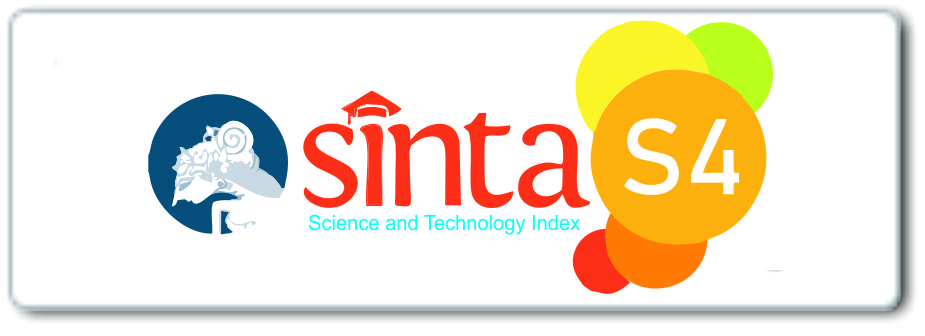Psychosocial Interventions to Improve Quality of Life in Drug Users at the National Narcotics Agency Primary Clinic of South Sumatra
DOI:
https://doi.org/10.56988/chiprof.v4i3.113Keywords:
Drug Abuse, National Narcotics Agency, Psychosocial Interventions, Quality Of Life, RehabilitationAbstract
Background: The increasing trend in the number of drug users in various circles makes this issue a major concern for the government and related institutions in efforts to overcome drug abuse. The challenges in dealing with drug problems remain large despite the decline in the prevalence of drug abuse in Indonesia. Aims: to obtain a clear and comprehensive picture of the rehabilitation process for outpatient NAPZA user clients at the South Sumatra BNNP Pratama Clinic and to understand how psychosocial interventions are implemented to support client recovery during the rehabilitation program. Methods: The approach used in this report is a descriptive qualitative approach, with psychosocial interventions applied to drug abuse clients. The research process was carried out for 3 months, starting from March 3-June 2025, at the South Sumatra BNNP using the intervention provided in the form of psychosocial interventions. Data collection was carried out in three ways, Participatory Observation, Case Study, and Documentation. The data analyzed were in the form of documents resulting from psychosocial interventions through individual, group, family and couple counselling. Result: Psychosocial interventions in outpatient rehabilitation at the Pratama Clinic of the South Sumatra BNNP have been shown to have a positive impact on improving the quality of life of drug users. These interventions include individual counselling, family counselling, couples counselling, and complementary group counselling. Conclusion: psychosocial intervention can make positive developments, such as increased motivation to stop using drugs, improved quality of life, and the ability to manage emotions and improve social and family relationships.
Downloads
References
G. A. Lukman, A. P. Alifah, A. Divarianti, and S. Humaedi, “Survei Nasional Penyalahgunaan Narkoba 2021,” J. Penelit. dan Pengabdi. Kpd. Masy., vol. 2, no. 3, p. 405, 2022.
F. N. Eleanora, “Bahaya Penyalahgunaan Narkoba Serta Usaha Pencegahan Dan Penanggulangannya (Suatu Tinjauan Teoritis),” J. Huk., vol. 25, no. 1, p. 439, 2011, doi: 10.26532/jh.v25i1.203.
L. Manurung, “The Impact of Drug Abuse on Families and Society (Literature Review).,” MSJ Major. Sci. J., vol. 2, no. 2, pp. 239-244., 2024.
M. L. John, I. J. J. Otene, and G. E. Antenyi, “An Overview of Drug Abuse: Causes, Effects, and Control Measures,” Asian J. Med. Heal., vol. 21, no. 11, pp. 263–268, 2023, doi: 10.9734/ajmah/2023/v21i11945.
A. S. Afifah and Rofi’ah, “Penyalahgunaan Narkotika Pada Masyarakat (Studi Kasus Di Wilayah Ciomas Kabupaten Bogor),” J. Gagasan Komunikasi, Polit. dan Budaya, vol. 1, no. 1, pp. 53–59, 2023.
BNN, “HANI 2024: Masyarakat Bergerak, Bersama Melawan Narkoba Mewujudkan Indonesia Bersinar.” [Online]. Available: https://bnn.go.id/hani-2024-masyarakat-bergerak-bersama-melawan-narkoba-mewujudkan-indonesia-bersinar/
D. J. Kruger, H. M. Kirk, K. E. Leonard, J. J. Lynch, N. Nielsen, and B. M. Clemency, “Assessing challenges and solutions in substance abuse prevention , harm reduction , and treatment services in New York State,” SSM - Heal. Syst., vol. 3, no. August, p. 100039, 2024, doi: 10.1016/j.ssmhs.2024.100039.
A. M. Nawi et al., “Risk and protective factors of drug abuse among adolescents: a systematic review,” BMC Public Health, vol. 21, no. 1, pp. 1–15, 2021, [Online]. Available: https://bmcpublichealth.biomedcentral.com/articles/10.1186/s12889-021-11906-2
J. Kisaka, “Challenges Facing The Prevention Of Drug And Substance Abuse In Secondary Schools: Case Of Malindi Central Urban Sub-County, Kenya,” Eur. J. Educ. Stud., vol. 6, no. 9, p. 84, 2019, doi: 10.5281/zenodo.3576314.
J. Zwick, H. Appleseth, and S. Arndt, “Stigma: How it affects the substance use disorder patient,” Subst. Abus. Treat. Prev. Policy, vol. 15, no. 1, pp. 1–4, 2020, doi: 10.1186/s13011-020-00288-0.
S. Devi and S. Singh, “Relapse in Drug Addiction: A Review,” Indian J. Heal. Wellbeing, vol. 14, no. 3, pp. 405–409, 2023, [Online]. Available: https://www.proquest.com/scholarly-journals/relapse-drug-addiction-review/docview/2878443227/se-2?accountid=17242%0Ahttps://media.proquest.com/media/hms/PFT/1/4wfsV?_a=ChgyMDI0MDkxNzAzNTQzNDcxNzoxMDAzMDMSBTkxMTAwGgpPTkVfU0VBUkNIIg8xNTIuMTE4LjE1MC4xNzkqBzIwM
M. Barati, K. Bandehelahi, T. Nopasandasil, H. Jormand, and A. Keshavarzi, “Quality of life and its related factors in women with substance use disorders referring to substance abuse treatment centers,” BMC Womens. Health, vol. 21, no. 1, pp. 1–7, 2021, doi: 10.1186/s12905-020-01155-7.
Downloads
Published
How to Cite
Issue
Section
License
Copyright (c) 2025 Aldora Cinta Elysia, Sawi Sujarwo

This work is licensed under a Creative Commons Attribution-NonCommercial 4.0 International License.




















